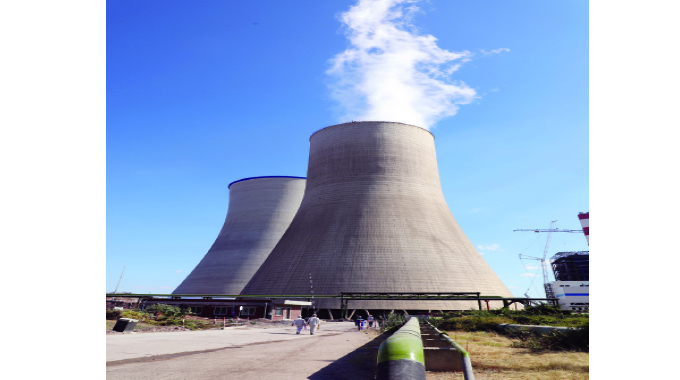The Chronicle

Business Reporter
EXTRACTIVE sector investments with spin-offs to the energy sector continue to grow with mining concern, Xintai Resources, set to establish a power and metallurgical Special Economic Zone (PM-SEZ) at River Ranch and Tshivhombwe in Beitbridge, Matabeleland South.
The scope of the project, which has four components also entails the construction of a thermal power plant that will supply excess power to the national grid.
 Hwange Power Station
Hwange Power StationIn addition, the mine intends to export coal products to the international markets, generating much-needed foreign currency.
To lay the groundwork for the project, Xintai Resources has engaged Lutanda (Pvt) Ltd to carry out a mandatory environmental and social impact assessment.
The project has four major components including coal mining and washing at the existing Tuli Coal Mine, a coking plant, a ferrochrome smelting plant and a thermal power plant.
“In compliance with the Environmental Management Act (Chapter 20:27), Xintai Resources is required to prepare an Environmental and Social Impact Assessment (ESIA) report for the four components of the PM-SEZ”,” reads part of the notice.
Zimbabwe has vast unexploited coalfields in the Hwange and Binga areas along the fossil beds of the Zambezi River.
It also has huge unexploited coalfields in Chiredzi in the south-east Lowveld.
 President Mnangagwa
President MnangagwaThe Beitbridge coal mining project is another example of growing investor confidence in the country under the Second Republic led by President Mnangagwa.
In line with the US$12 billion milestone target by 2023, the new projects have seen a huge jump in mining output in the last four years, with corresponding export earnings and massive job creation impact along the value chain.
The mining sector is a key player in the country’s economy, contributing more than 60 percent of Zimbabwe’s export receipts and attracting more than 50 percent of foreign direct investment (FDI).
From an average of US$2,1 billion in annual earnings in 2017, official reports indicate the mining sector achieved US$5,3 billion in earnings last year and is projected to clock US$8 billion this year.
The sector also contributes about 13 percent to Gross Domestic Product, as well as generating significant downstream business and revenue injection to the fiscus through taxes.
The notice adds that the project will increase coal production in the country.
“The coal will be used to fire metallurgical processes within the PM-SEZ, to increase coal production in the country for use in thermal, metallurgical and industrial use and to supply the international markets,” reads the notice.
“The ferrochrome plant will be developed for the production of stainless steel, special steel and castings. The power will be used to energise the PM-SEZ project while surplus power is transmitted to the national grid.”
The notice added that the proposed thermal power plant “is a significant contribution given the current shortages of electricity in Zimbabwe. The project is expected to create employment”.
Zimbabwe is presently facing acute power shortages, which have seen consumers going for long hours, outside the normal load-shedding periods, without electricity.
 Gross Domestic Product
Gross Domestic ProductThe situation, caused initially by frequent breakdowns at Hwange Thermal Station, has been compounded by the water shortages in Lake Kariba resulting in a cutback at Kariba South Power Station, which provides the bulk of Zimbabwe’s electricity supplies.
The Zambezi River Authority, which runs the Kariba Dam, wrote to the Zimbabwe Power Company recently directing it to stop generating electricity until at least January, when water levels are expected to have picked up.
This was modified last week to allow Zesa to generate 300MW, a major help but still leaving Zimbabwe short and getting half what it was looking at from Kariba.
 Kariba Power Station
Kariba Power StationRamping up generation at thermal power stations and increasing power imports are among the measures pushed by Government after Kariba South Power Station halved generation.
Several major mining firms, which have built their mini power stations are setting up solar farms and are feeding the national grid with excess energy.
Article Source: The Chronicle
